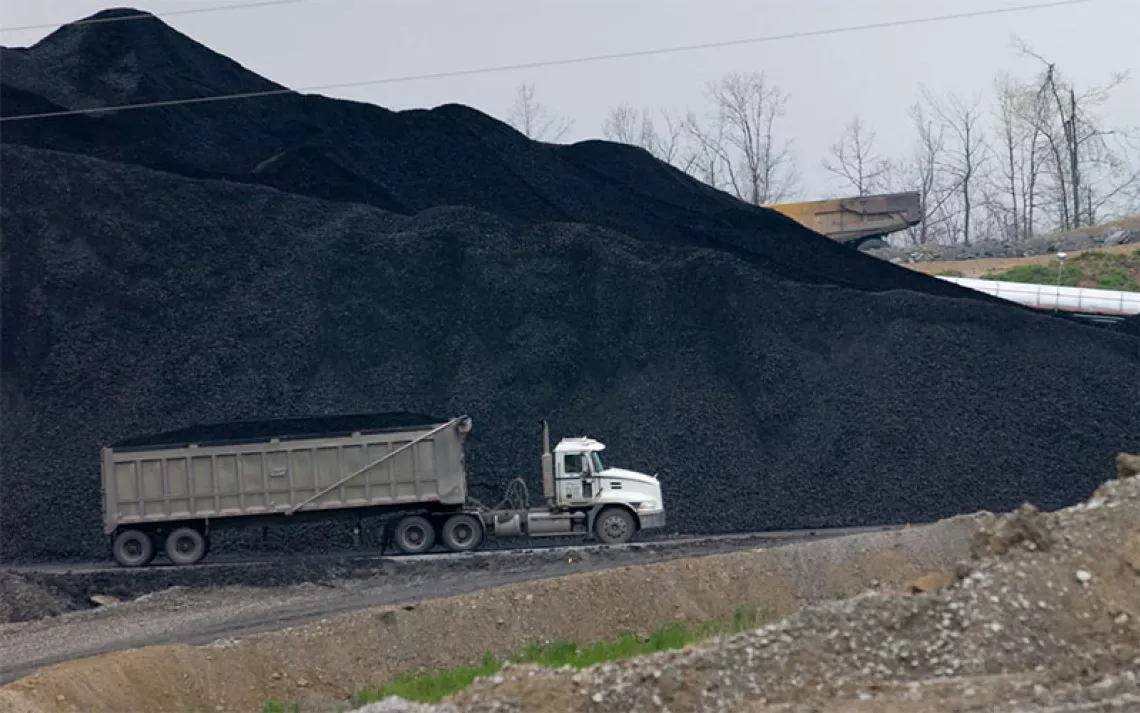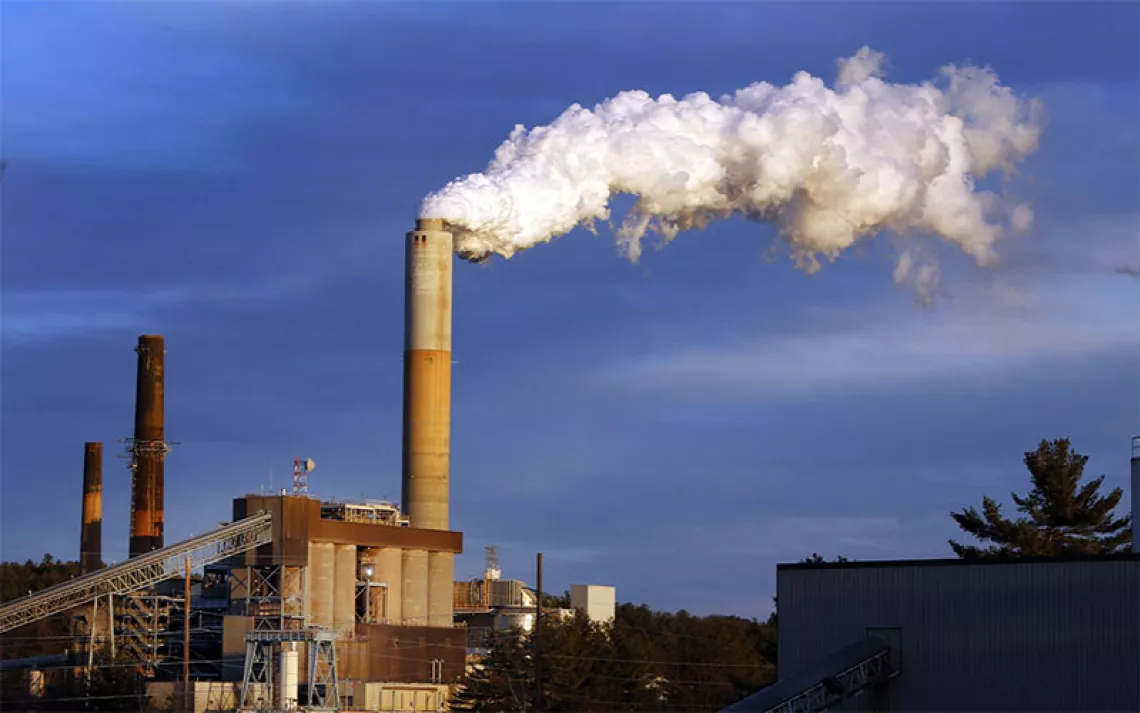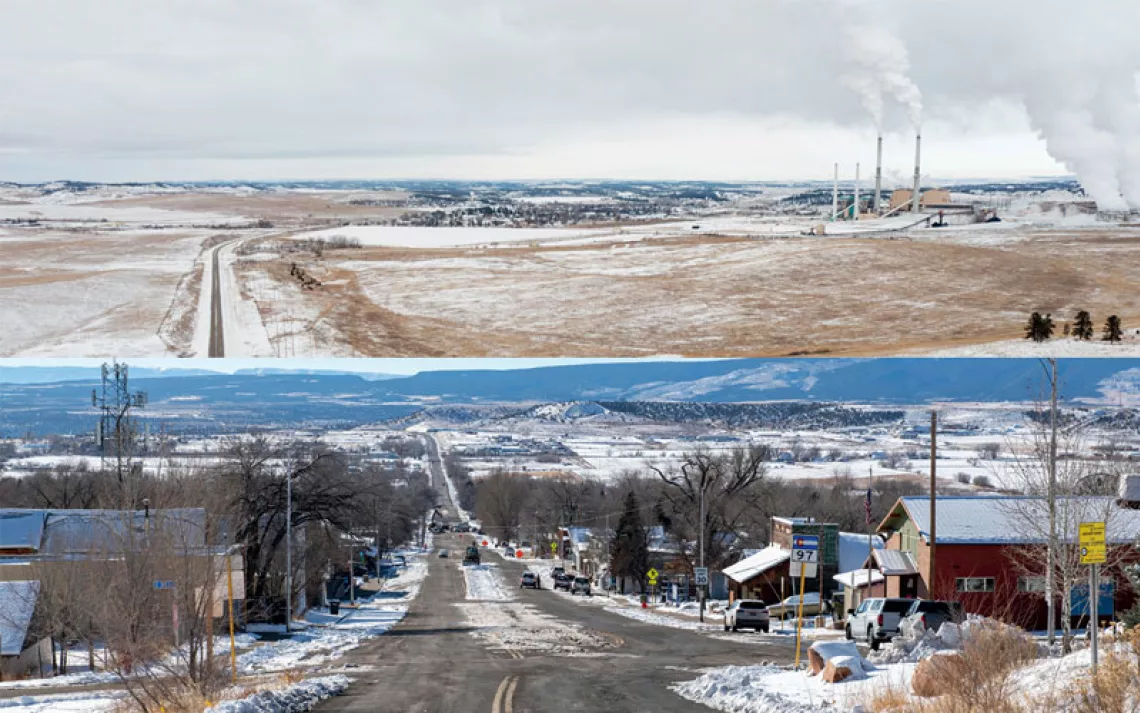Living (and Dying) With Coal
PHOTOS BY KEREM YÜCEL
Gülnaz Killi lives near the ocean in Turkey’s eastern Mediterranean region, but despite the fresh sea air, she sometimes has to use a respirator to breathe. So does her daughter. So does her nine-year-old grandson.
“The doctors say they all have chronic obstructive pulmonary disease. Gülnaz is always swallowing or coughing; it’s not too easy for her to speak,” says Turkish documentary photographer Kerem Yücel, who captured a portrait of Killi, 50, and her grandson in front of a 1,200-megawatt coal-fired power plant near their home in Sarıseki, İskenderun. A second plant of the same size is still in the works, despite the recent loss of backing from France’s state-owned utility Engie and the ongoing protests of locals like Killi.
“She’s been sending her handwritten letters to everyone—members of parliament, ministry officials—but no one is listening,” says Yücel. An agricultural engineer by training, he has spent much of the past year traveling Turkey, documenting life in nearly a dozen coal communities.
“I’ve always been interested in environmental issues, but since my 11-month-old twins were born, I’ve become much more sensitive to things like climate change,” Yücel explains.
His photo series, İsli Gelecek (Smoky Future), was used in educational materials distributed by the environmental group Climate Action Network (CAN) Europe at the recent Paris talks. But though carbon pollution from coal-fired power plants is indeed a major contributor to global climate change, the effects shown in Yücel’s photographs are much more immediate—and visible.
“Places near the power plants are covered with coal ash and dust. When people bring their laundry in after hanging it out to dry, you see a line of dust on the clothes coming off the clothesline,” Yücel says. “So many children and older people are using breathing masks both indoors and outdoors. Lots of men were ready to open up their shirts and show me their scars from operations on their hearts or lungs.”
Coal-related health impacts contribute to 2,876 premature deaths among adults and 13 infant deaths each year in Turkey, as well as up to $3.5 billion in medical costs, according to a May 2014 report published by the Brussels-based Health and Environment Alliance in cooperation with the Turkish Medical Association. But Turkey’s government is still pushing hard to generate more power from coal to meet its rapidly growing energy demand, particularly as relations sour with Russia and Iran, the country’s major sources of imported gas and oil.
Twenty-two coal-fired power plants generating from 100 megawatts to 1,440 megawatts are already online across Turkey, and at least 75 more are in various stages of planning. (Were they all to be built, the new plants would pump more than 100 million additional tons of carbon dioxide into the air annually, according to estimates by CAN Europe and by independent climate and energy consultant Önder Algedik.)
The largest of the existing facilities, in the inland lignite coal fields of Afşin-Elbistan, is scheduled for a $12 billion expansion. If completed as planned, it would generate 7,000 MW, making it the biggest coal-fired power complex in the world.
Though some communities like the small olive-growing village of Yırca have thus far been able to keep power plants out, large-scale protests are few and lasting victories even more rare. “People understand these facilities have a bad effect on the environment, but that’s not usually their priority,” Yücel says. “If their relatives are going to be working for the plant, they’re willing to discuss its construction. If not, they are ready to protest.” In most cases, he says, jobs are doled out as political patronage, with skilled workers brought in from Istanbul, Ankara, and other big cities and locals ending up in the lowest-paid positions.
“The economic benefit is not much,” Yücel says. "They lose big amounts of agricultural land [to construction], and each year agricultural productivity around the coal plants is going down." In Çanakkale province, he adds, home to the famous Gallipoli battlefields and ancient city of Troy, farmers near the area’s three existing coal-fired power plants “say their cows are not producing as much milk as before and that its fat content is down because the animals can’t find enough grass to eat.” A dozen additional power plants are scheduled to be built in Çanakkale alone.
Loss of traditional agricultural livelihoods has a ripple effect, driving out residents and leaving more space for (and less potential opposition to) further energy development. “Younger people are leaving the villages and migrating to the big cities, and municipal offices and schools are closing down,” Yücel says. “Some of these villages near Afşin-Elbistan are like a scene from The Walking Dead—there's no one left.”
Follow photographer Kerem Yücel on Instagram.
 The Magazine of The Sierra Club
The Magazine of The Sierra Club














